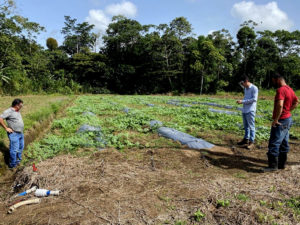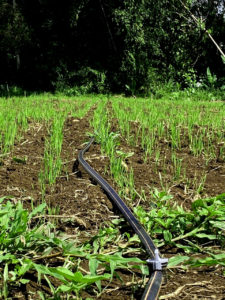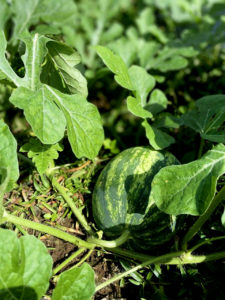What is ‘fertigation’?
At EARTH University, we work to spread applied-technological knowledge throughout global agriculture. Our most recent pursuit is a high-tech fertigation laboratory, a new on-campus space that will enable students and faculty to research and innovate around resource-conserving methods of fertilization (ferti-) and irrigation (-gation). According to Professor Gregory Guevara, one of the project’s leaders, the lab’s output will help make agricultural production chains more profitable and accessible.
Fertigation is the delivery of nutrient-fortified water to plants. Our system takes that a step further by integrating principles of precision agriculture in which each drop of that fertilizer water is applied strategically.
“The fertigation program features a series of monitoring instruments that allow us to automate the amount of water and nutrients we use,” Guevara explains. “Working on this enables us to write mathematical algorithms that record the data onto a computer that then manages the agricultural processes and makes recommendations and predictions for improvements.”
How does the lab work?
In May, Israeli agribusiness firm Netafim supplied the equipment and technical support to kickstart the project. Since then, an area of 1.6 hectares has been divided into eight blocks of different produce categories, including vine vegetables (tomato and squash), cereals (rice and corn), fruits (watermelon), annuals (papaya and yuca), and perennials (orange and cacao). Drainage canals have been dug and valves installed that form part of a complete irrigation system. An equipment room was built to hold tanks, pumps, filters, and fertilizer-injection machines. Everything is linked to a computer that is connected to an automatic-control system, from which operators can monitor and manage the automated process – even remotely.
“Students understand that this infrastructure is the future of agriculture,” Guevara says. Alongside faculty mentors, third- and fourth-year EARTH students are leading several investigations, researching topics such as nutrition and biometric relations, watermelon cultivation, and rice production.
“Planet-wide, rice is the crop with largest water and carbon footprints,” Guevara adds. “One statistic, in particular, estimates that changing 10 percent of the flooded surface currently used for rice production across the world [to a precision-fertigation system] is equivalent to removing 40 million cars from roads. That’s why we aim for good productivity within our system, because of the positive impacts we can have globally.”







